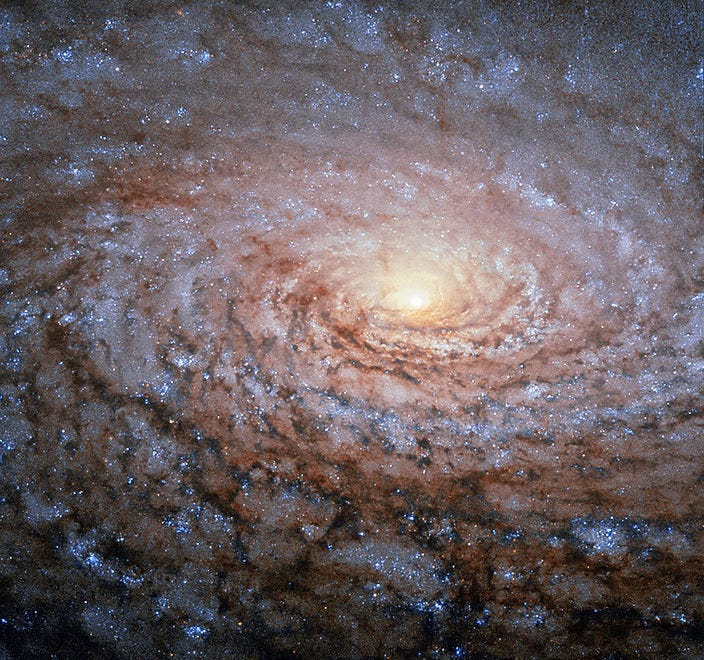Messier 63, a galatic sunflower.
Key science
The arrangement of the spiral arms in the galaxy Messier 63, seen here in an image from the NASA/ESA Hubble Space Telescope, resembles the pattern at the centre of a sunflower. So the nickname for this cosmic object — the Sunflower Galaxy — is no coincidence.
Discovered by Pierre Mechain in 1779, the galaxy later became the 63rd entry in fellow French astronomer Charles Messier’s famous catalogue, published in 1781.
We now know that this galaxy is approx 27 million light-years away and belongs to the M51 Group — a group of galaxies named after its brightest member, Messier 51, also known as the Whirlpool Galaxy, a spiral-shaped galaxy.
Galactic arms, sunflowers, and whirlpools are only a few examples of the universe’s apparent preference for spirals. I digress. For galaxies like Messier 63, the winding arms shine brightly because of recently formed blue–white giant stars and clusters, readily visible in this Hubble image.
Consise & to the point


